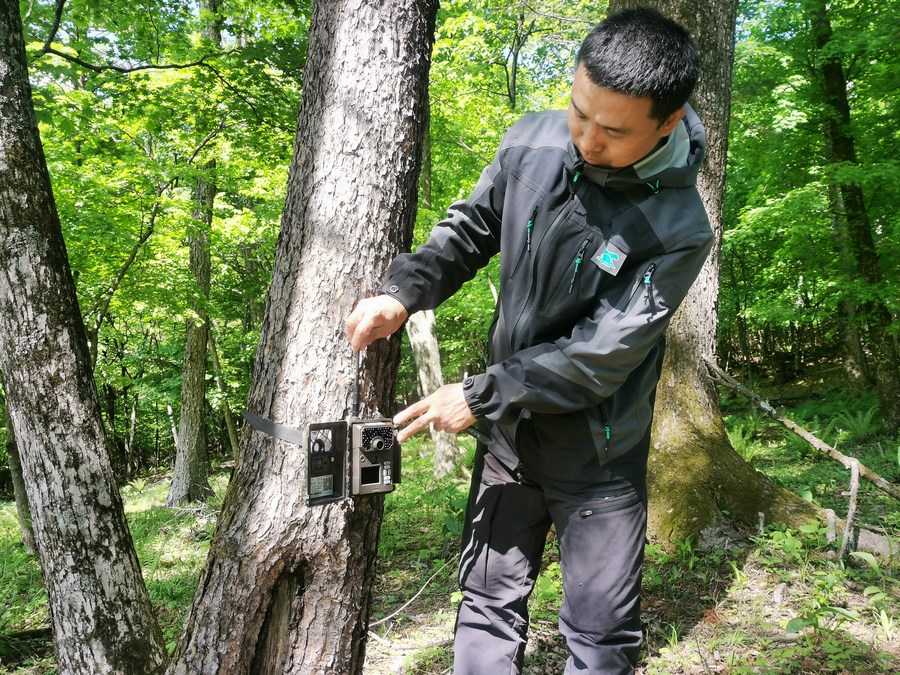
Photo taken on May 28, 2020 shows Li Dongwei installing an infrared camera at the Northeast China Tiger and Leopard National Park. (Xinhua)
by Xinhua writers Gao Chunxiao and Shao Meiqi
CHANGCHUN, Oct. 17 (Xinhua) -- When patrolling through deep mountains, Li Dongwei, a 39-year-old forest ranger, cannot hide his excitement when seeing traces of wild Siberian tigers.
"It proves that Siberian tigers were here!" said Li, who lives in the city of Hunchun, a border city in northeast China's Jilin Province.
Siberian tigers, also known as Amur tigers, mainly live in Russia's Far East and northeast China. Known as one of the world's most endangered species, about 500 Siberian tigers are believed to be living in the wild.
Li has always been a fan of wild animals. He doesn't talk much, but can't stop talking about the "big cats." Such passion for the endangered creature has earned him a nickname -- "Brother Dong, the Tiger man."
"I especially like Siberian tigers. They're the king in the mountains and forests. Protecting them is protecting ecology," he said.
Li joined a local team of wildlife protection volunteers in 2012. He and his teammates have trekked deep into the mountains, patrolling on a regular basis to clear traps and install and maintain infrared cameras all year round. Even frigid cold and harsh natural conditions during the long winter season cannot stop them.
"I felt especially honored to be a volunteer protecting wildlife," he said.
At the end of 2020, Li Dongwei became the head of the rangers' team under the forestry bureau of Hunchun City. So far, Li and his team have dismantled over 10,000 hunting tools and helped catch poachers many times.
As China-Russia cooperation is vital to the protection of Siberian tigers, Li and his team also exchange experiences with Russian colleagues. Rangers from both countries compete in the protection of the rare tiger in its habitat in a bid to improve monitoring and patrolling techniques.
In 2019, national parks of China and Russia -- the Northeast China Tiger and Leopard National Park and Russia's Land of the Leopard national park -- signed a three-year cooperative action plan to beef up cooperation in the protection of Siberian tigers and Amur leopards. The document includes such action plans and long-term activities, as containing special researches on cross-border activities of tigers and leopards, data sharing and nature reserves ecological protection experience exchanges.
China on Tuesday officially designated the first group of national parks, including the Northeast China Tiger and Leopard National Park, which spans over 1.4 million hectares in the provinces of Jilin and Heilongjiang.
According to the latest data from the park's management bureau, the number of wild Siberian tigers and Amur leopards inhabiting the park has increased from 27 and 42 to 50 and 60 respectively since 2017. At least 10 newly-born wild Siberian tiger cubs and seven Amur leopard cubs have been captured.
As of now, Li has recruited more than 400 volunteers via the internet and more young people are participating in the protection of Siberian tigers out of love for wild animals. They brave harsh natural conditions not only to protect the rare "big cats", but also to protect the common home of humanity. ■




